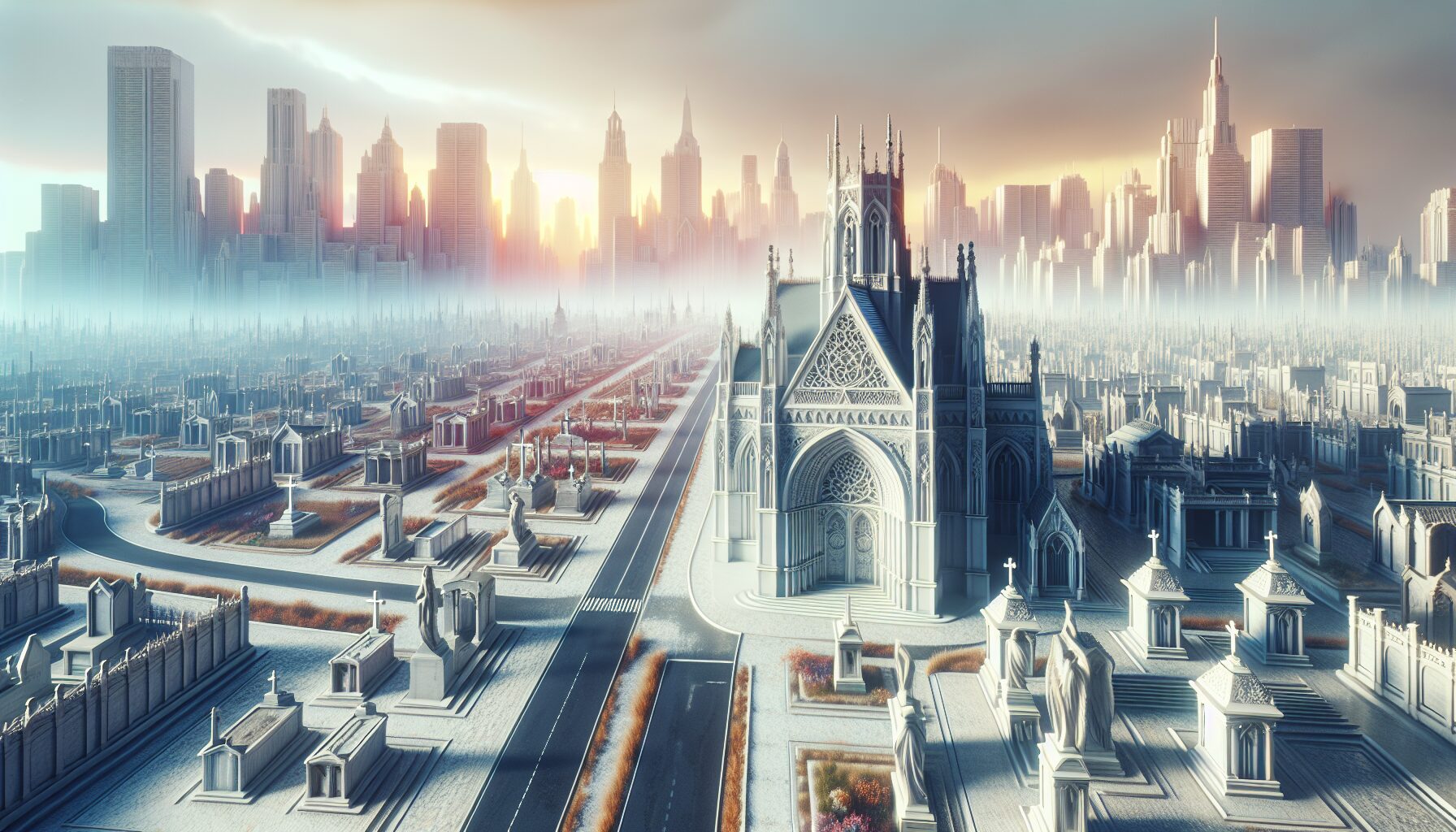In the heart of urban landscapes where the hustle and bustle of life never pause, there exist silent cities, reverently known as necropolises. These sacred grounds are not merely places of rest; they are archives of human history, culture, and artistry. Over time, these cities of the dead tell us as much about the living as they do about those who have passed.
Perhaps the most renowned of these is the Parisian Père Lachaise Cemetery, opened in 1804. Conceived by architect Alexandre-Théodore Brongniart, Père Lachaise was revolutionary in its design—a garden cemetery that challenged traditional perceptions of burial grounds. This vision caught the public’s imagination and has since inspired numerous cemeteries around the world, heralding a new era where beauty and morbidity coexist.
“Père Lachaise is a place where art meets sorrow, where every tomb is a testament not only to those who have passed but to the cultural tides that ebb and flow through human society.” — Pascal Payen-Appenzeller, historian
The Living City of the Dead
As we explore necropolises, we find that they morph and adapt alongside the cities they inhabit. The Highgate Cemetery in London, part of the ‘Magnificent Seven’ cemeteries that transformed Victorian funeral practices, stands as an epitome of Gothic revival architecture. Its winding paths and verdant overgrowth captivate visitors, standing as a reminder of the era’s fascination with death and the afterlife.
The juxtaposition of life and death is further evident in modern reinterpretations of these spaces. The City of the Dead in Cairo is a bustling urban community where the living have made their homes amongst ancient tombs. This unique dynamic challenges conventional perceptions of cemeteries as desolate or unused, highlighting the adaptive measures communities will take to survive.
Cultural Significance and Artistic Expression
Each necropolis resonates with cultural significance, serving as a blank canvas where artists express societal values and personal grief. The sprawling avenues of Colma, California, known as the “City of the Silent,” is an intriguing manifestation of displacement. Founded in response to San Francisco’s growing population pushing burial grounds outwards, Colma is home to more dead than living.
“It’s the only city in the world where the inhabitants have no future, only a past.” — Renato Mendoza, local historian
In contrast, the artistic vigor of La Recoleta Cemetery in Buenos Aires represents the deep-seated spirituality and cultural pride of Argentina, with each mausoleum narrating the story of illustrious families and historical icons like Eva Perón.
Necropolis as a Reflection of Changing Attitudes
The design and purpose of necropolises have evolved, mirroring the changing attitudes towards death and remembrance. Green burials and eco-cemeteries are becoming integral within this landscape, reflecting a growing environmental conscientiousness. These green spaces advocate for natural decomposition and minimize synthetic materials, aligning death with the serene cycles of nature.
This shift is evident in urban centers such as New York City’s Green-Wood Cemetery, which offers green burials and champions landscape conservation. Founded in 1838, Green-Wood has always offered more than a resting place; it’s an arboretum, a public park, and a cultural museum.
Technology and the Digital Necropolis
The advent of technology has also redefined the concept of necropolis. Digital memorials and interactive grave sites invite the living to connect with their ancestors in unprecedented ways. QR codes on headstones leading to personalized online memorial pages represent a merging of technology with tradition, extending the boundaries of remembrance beyond physical locality.
“The digital age allows us to harbor personal histories within the web, making legacies timeless and memories indelible.” — Sherry Turkle, MIT sociologist
As society progresses and urbanization redefines landscapes, necropolises will continue to evolve. These cities of memory and mortality remain intrinsic to cultural identity and societal values. Each headstone and mausoleum bears witness to the human condition, telling stories of those who came before and echoing the ever-changing narrative of humanity.
In contemplating these sacred spaces, we are reminded of the transcendence of memory over mortality, offering solace in the assurance that, while the flesh may perish, the spirit endures through the legacies left behind.

Comments